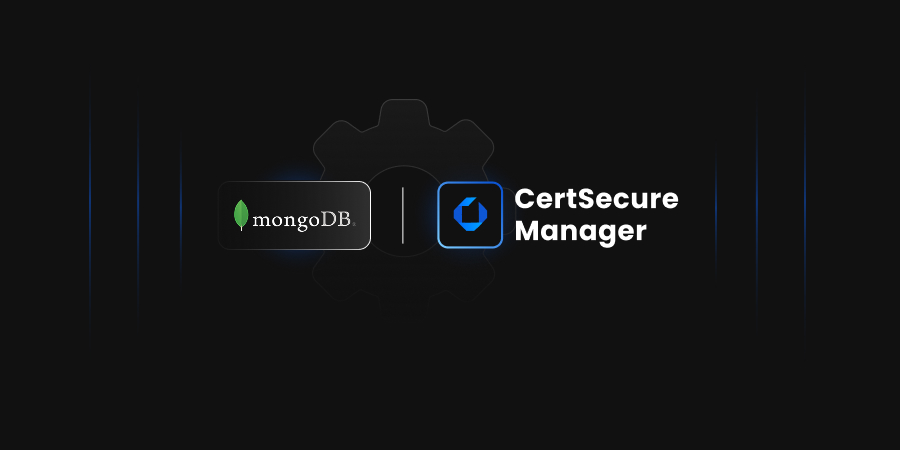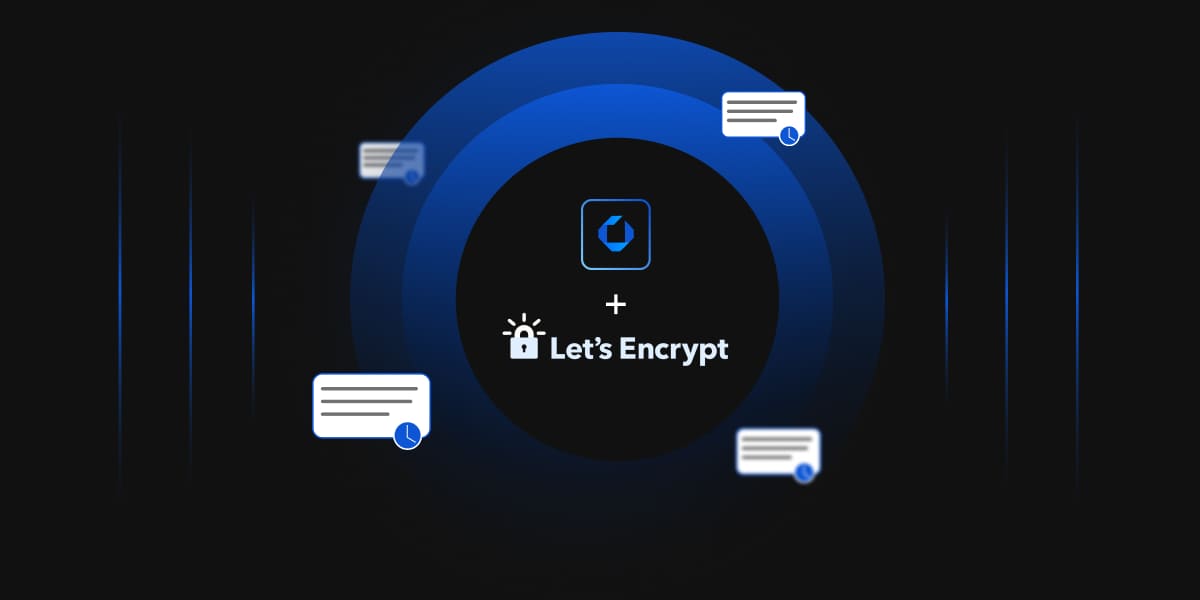Enterprises today operate in dynamic, hybrid environments with servers, applications, and services spread across on-prem, cloud, and containerized platforms. In such an environment, digital certificates are foundational to securing communication, authenticating systems, and complying with internal and external security mandates.
But managing hundreds or thousands of certificates manually? That’s a recipe for outages, human errors, and compliance issues.
To solve this, Encryption Consulting’s CertSecure Manager now integrates seamlessly with Ansible, giving security, DevOps, and IT teams a powerful way to automate certificate lifecycle management across their infrastructure.
The Problem
If your team is still handling certificates manually, you already know the pain:
- Logging into each server individually
- Generating private keys and CSRs manually
- Submitting requests to the CA
- Waiting for approvals
- Downloading and deploying certificates manually
- Repeating the same steps for renewals
- Keeping track of expiration dates in spreadsheets
All this not only takes time but also leaves too much room for error.
One expired certificate can lead to service disruptions. Misplaced keys can lead to security risks. Inconsistent processes across teams can result in audit failures.
So, you see, automation is no longer just a convenience; it has become a necessity.
The Solution
CertSecure Manager is Encryption Consulting’s certificate lifecycle automation platform that centralizes and secures the management of digital certificates across your environment. It integrates with public and private CAs, handles enrollment and renewals, provides audit trails, and ensures policy compliance, all from a single place.
Ansible, on the other hand, is a powerful automation engine used widely across DevOps and IT teams. It allows you to automate configuration management, deployments, and operations using simple, agentless YAML playbooks.
The integration between CertSecure Manager and Ansible connects these two tools, allowing teams to automate certificate operations across both Linux and Windows systems while maintaining centralized governance and visibility through CertSecure Manager.
How Does the Integration Work?
The integration is based on a secure token-based authentication mechanism. Here’s how it fits together:
- Download the CertSecure Ansible automation package, a flexible alternative to the UI or CLI tool for handling certificate operations. After unzipping the package on a Linux system as the control node, start by configuring the inventory file with the details of your Linux and Windows target machines in the hosts file located in the inventory directory and the cert_config.yml file in the vars directory.
- Once configured, you can execute the playbook to automate certificate enrollment, renewal, or download tasks. You can also see logs from the logs directory and the current status of each certificate issued using the playbook.
-
Run the playbook using the command:
sudo ansible-playbook –ask-vault-pass -i inventory/hosts certificate_playbook.yml
Register the Ansible Controller within the CertSecure Manager using the registration token from the CertSecure Manager UI.
- Every Ansible instance used for certificate automation is registered as an “agent”. CertSecure generates a unique registration token for it.
- This token is stored securely (via Ansible Vault) and used for API authentication. It ensures that only trusted automation nodes can interact with the certificate management APIs.
- Playbooks communicate with CertSecure Manager’s APIs.
When you run a playbook to request a new certificate, it uses the token to connect securely to CertSecure Manager, which handles certificate issuance, renewals, downloads, and policy checks. To run the playbook for certificate generation, use this command:
ansible-playbook –ask-vault-pass -i inventory/hosts certificate_playbook.yml -e “operation=generate”
- Certificates are deployed to target systems automatically.
- Although certificates are requested and deployed via Ansible, full audit trails, expiration tracking, and policy checks are still performed centrally within CertSecure Manager.
This approach balances automation with control. You get the flexibility of Ansible without losing visibility or security.
What Makes This Integration Powerful?
There are several reasons why this integration is important. Here are the key ones:
- Security by Design
- No private key ever leaves the target machine.
- Credentials and tokens are encrypted using Ansible Vault.
- Agentless Architecture
- Works over SSH (Linux) and WinRM (Windows).
- There is no need to install anything on target systems.
- Cross-platform Support
- Automate Linux and Windows systems in the same playbook.
- Custom certificate settings per host or group.
- Enterprise Scale
- Automate certificate tasks across hundreds or thousands of systems.
- Group and tag inventory files by region, team, application, or environment.
- Seamless Integration
- Plugs into existing DevOps or IT operations pipelines.
- Keeps CertSecure Manager as your single source of truth for certificates.
- What Can You Automate?
The Ansible integration is built to automate core certificate operations, including:- Enrollment: Generate keys, create CSRs, request certs, and deploy them.
- Renewal: Renew certificates before expiration based on the serial number.
- Download and Deployment: Retrieve existing certificates and deploy to the correct path.
- Customization: Define host-level configurations (CN, SANs, templates).
- Security: Use Ansible Vault to protect tokens and sensitive files.
You can mix and match these operations based on your use case, from provisioning certs during server setup to rotating them periodically across services.
Real-World Use Case
Let’s say you’re a DevOps engineer managing 300 Linux servers and 100 Windows machines. Each of them hosts internal APIs that need valid certificates.
Previously, your team manually generated CSRs, emailed them to the security team, waited for responses, and logged into each machine to install the certificate. The process took days, and tracking expirations was a nightmare.
Now, with CertSecure Manager and Ansible:
- You define your servers in an Ansible inventory file.
- You have a playbook that requests and installs certificates.
- You run one command to generate or renew certificates across 400 machines.
- All certificates are tracked and audited centrally in CertSecure Manager.
- No spreadsheets. No last-minute outages. No guesswork.
Why Should Enterprises Adopt This?
This integration isn’t just about saving time; it’s about aligning with best practices in security, automation, and compliance.
- For InfoSec teams, it ensures that policies are enforced and certificates are monitored.
- For DevOps teams, it removes bottlenecks in deployments and provisioning.
- For Compliance teams, it delivers a complete audit trail of certificate operations.
When combined, CertSecure Manager and Ansible enable your organization to treat certificates as code, versioned, automated, and predictable.
Want to Set It Up?
We’ve published a step-by-step technical guide that walks you through:
- Getting your registration token
- Setting up inventory and playbooks
- Using Ansible Vault
- Executing operations like generate, renew, and deploy
- Read the Ansible Integration Guide Here
What’s Next?
While the current integration already supports the full certificate lifecycle, from enrollment and renewal to deployment and tracking, we’re just getting started. Our team is actively exploring new ways to enhance automation, strengthen security, and expand compatibility across modern DevOps ecosystems.
Whether it’s deeper integrations, smarter automation, or extended support for discovery and compliance, the goal remains the same: to make certificate management completely hands-off, scalable, and seamlessly integrated into your existing workflows. With continuous improvements on the horizon, CertSecure Manager and Ansible will continue to evolve to meet the growing needs of enterprise security and infrastructure teams.
Conclusion
Automation is the future of certificate lifecycle management. With CertSecure Manager and Ansible, your organization not only reduces operational workload but also gains visibility, security, and control.
Start small with automating one environment. Then, scale across your entire enterprise. And when you’re ready, our guide will be there to help you every step of the way. To learn more about CertSecure Manager, explore its features, or view other integrations, such as Ansible, visit our demo page or contact us for support and inquiries.




